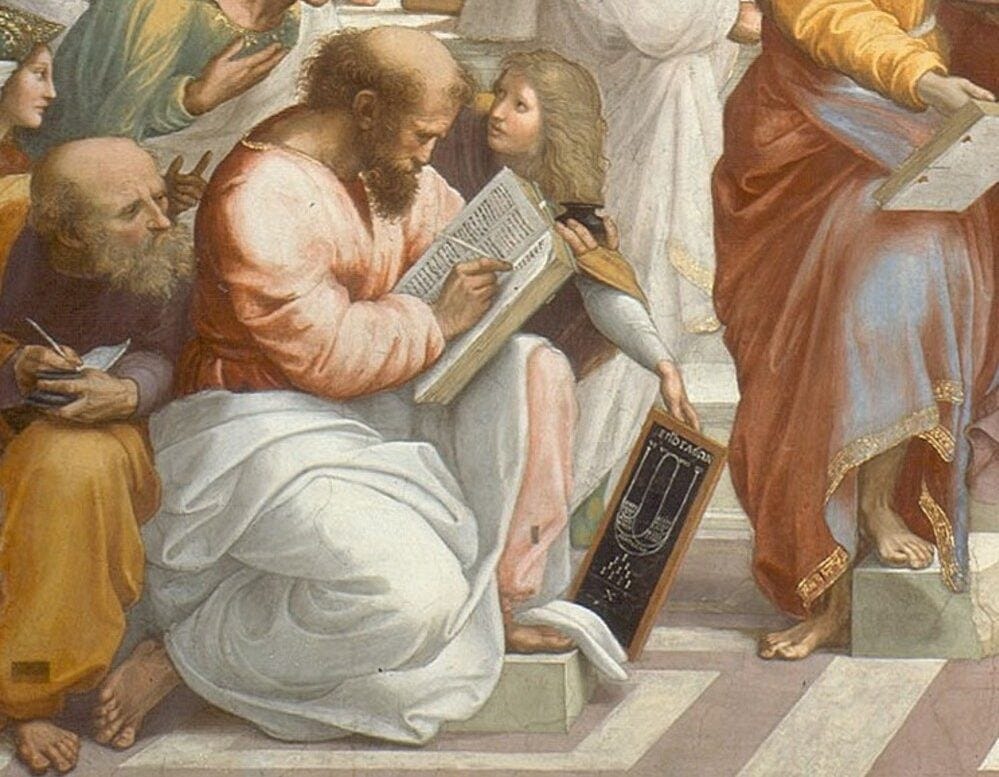Good Lessons and Bad Lessons
Some Thoughts on Christopher Schlect's Pedagogical Advice
While I’ve dipped into Classical Education from time to time here at A Southern Knickerbocker, I’ve constrained myself to philosophical ideas or reviews of books which might be helpful to other classical educators. I don’t get too much into the pedagogical side of things, but I’m planning to offer a few shorter forays into that arena over the next few months. As someone who does a fair amount of teacher training, I know that one area which can seem the most murky is that of lesson planning.
I’m not sure I have much to say that hasn’t already been said (which might be a problem for those outside of classical education but is fine for folks hoping to recover what has been lost). I’d like to offer some brief thoughts on what constitutes a good lesson in a classical classroom, largely through the thought of Dr. Christopher Schlect.
Dr. Schlect is a household name in Classical Christian circles, and his talks are often highly anticipated by his audience. Some years ago, 2015 to be specific, Schlect gave a talk about how to craft good lessons and to avoid bad ones (if you’re an ACCS member, you can access it on the MRC). A fellow at New Saint Andrews College, Schlect is adept at using methods from his history classes to offer broader pedagogical advice to folks in the trenches of the primary and secondary classroom. Not an easy task.
What Schlect did in this specific example, and what I have tried to imitate when I do professional development, is to model a good lesson rather than a work through a lecture or 4-point slideshow. Though a technical difficulty with the printer slowed down the initial pace of the class, Schlect lost little time in bringing the audience into his plan. He handed out an article, and after giving the participants time to read it, began asking a series of Socratic-styled questions until he got the audience to where he wanted to go. He occasionally filled in important things (a bit of history there, attention to some grammar here), and as a result covered a wide range of ideas and disciplines with a small article about women’s fashion during World War II. It set an impressive standard.
The session is worth your time, so I don’t want to over-summarize here. But this brief outline already offers a few important things. First, when faced with technical difficulties, teachers should be prepared to shift towards an alternative. The printer problem slowed Schlect down, but he didn’t waste even that time. He filled the minutes with ideas and advice that would be helpful later. Second, the learning environment benefits from quiet. The period of time in which the participants read the article Schlect distributed was properly silent. Schlect was comfortable with the quietness, and he invited others into that same comfort.
Beyond those basic concepts, Schlect advocated for the SWBAT acronym, which means “Student Will Be Able To.” This is predicated on the idea that a teacher must know, with some precision, where the student needs to be when the lesson is over. This is easy to think about in small chunks (“They need to understand Homeric epitaphs,” etc.) but more difficult to consider in the long haul. What kind of student should come out of a Humane Letters or Omnibus class where Homer is but one part of the story? On the other side of the hall, in the Math and Science courses, the temptation is to fall into technical specificity without considering the broader implications. It is easy to say an Algebra I student should know the Pythagorean Theorem; it’s harder to suggest what that might mean for them in terms of virtue.
Most teachers aren’t asked to invent SWBAT criteria on their own, with some sort of curriculum guide (either formally or informally) setting the basics out for a course. But teachers will, given a long enough tenure, have to think beyond those basics to embed SWBAT aspects into a lesson. Not necessarily in terms of content, but definitely in terms of what the content is aimed towards, such as virtue. Here are a few of the ones I started out with after first hearing Schlect’s session:
SWBAT recognize the classical virtues in a narrative, such as The Aeneid or The Horse and His Boy
SWBAT summarize Platonic dualism as represented in the Phaedo, offering a Christian understanding of the concept
SWBAT recognize their status as pilgrim, drawing from Chaucer’s The Canterbury Tales
A good lesson is one that will cover content and character. A bad lesson will do one of the other. I don’t actually recall is Schlect made that specific point, but it is the thing that I took away from his advice. I would probably reframe these specific ones today, making small changes to sharpen the point. But on the whole, I still think these are helpful SWBAT goals for a classroom. I had never tried to think through specifics aimed at virtue in this manner, and so Schlect’s method gave me the opportunity. It proved to be a long-term change that has shaped my teaching ever since.




